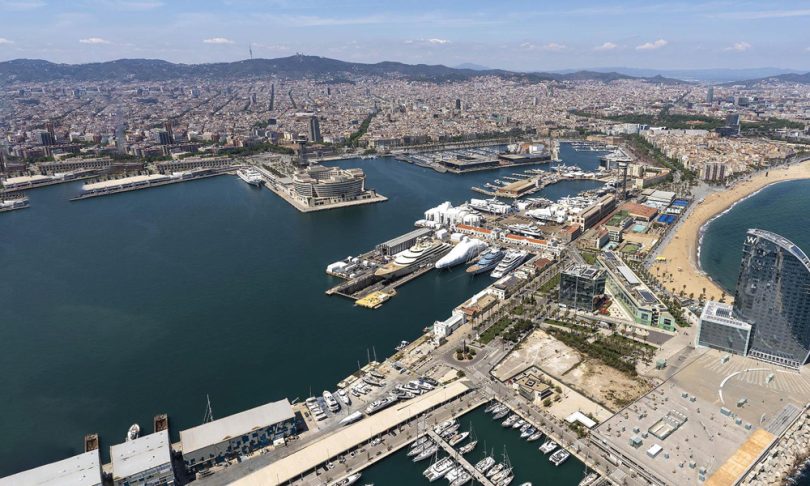[ad_1]
Telefónica has teamed up with APM Terminals and Mobile World Capital on a project to improve port traffic safety by linking cranes, vehicles and staff. Key to the success of this venture is a fusion of advanced communication and localization technologies, all powered by 5G technology and edge computing.
Telefónica, together with APM Terminals and Mobile World Capital, has developed a pilot project to improve safety in ports with the use of 5G networks. The aim of the project is to coordinate the terminal’s port traffic by being able to anticipate and notify potential accidents. This use case, which is based on C-V2X connected car technology, the low latency of 5G communications, the processing capacity of edge computing servers and precise location technology, aims to make APM Terminals Barcelona a safer place for workers.
Real-time communication with 5G
The development of the project involves the deployment of Telefónica’s 5G coverage at APM Terminals in the port of Barcelona, the provision of 5G connectivity to Straddle Carrier cranes, trucks and terminal personnel, as well as an acoustic warning system for possible collisions.
The Straddle Carrier cranes will be equipped with an on-board unit capable of communicating via 5G and through C-V2X technology, between them and with the rest of the actors. Trucks, truckers and terminal personnel will have 5G smartphones, on which a C-V2X application will be installed. In this way, the smartphone becomes another piece of the V2X environment, as well as the lever for an easy transition towards a fleet of natively connected vehicles and direct inclusion of people in the ecosystem.
Fixed elements, such as streetlights, will also be signaled with C-V2X communications, thus communicating with the rest of the mobile actors in real time.

Location intelligence
All the information communicated by the cranes, trucks and pedestrian personnel is sent securely to an application located geographically very close (Edge) to their place of consumption, in order to offer immediate responses. This application, hosted on the Edge, has the intelligence to be able to coordinate this cooperative driving between the different actors — called intelligent cooperative transport system (C-ITS) — and also offers a dashboard to APM Terminals to visualize on a map the positions of each of the actors participating in the project.
This intelligent cooperative transport system is housed in the edge computing node of Telefónica’s Virtual Data Centre (VDC) service located in Barcelona, which consolidates the company’s ability to offer very low latency services, along with the possibility of processing large amounts of information in real time to be able to extract high value data.
ALSO READ: Real-time situational awareness to spearhead Port of Rotterdam’s future

Precise positioning
Another strategic and vital pillar of this pilot is to have precise location. For this reason, a system to obtain precise locations as close as centimeters — using Global Navigation Satellite Systems (GNSS) and Real Time Kinematic (RTK) technology — has been deployed.
All GNSS devices receive signals with ionospheric, tropospheric, and satellite clock errors. The RTK technique can eliminate these errors and provide high-accuracy solutions. Two receivers are used in RTK: a base and a rover. The base, mounted on a precisely known location, measures errors and sends corrections to the moving rover. Using the correction data from the base station, the rover can provide centimeter accuracy in real-time.
RTK corrections are the information sent by the ‘bBase station’ to the ‘Rover’, so the ‘Rover’ can calculate its position with centimeter level.
Collaboration to achieve vision zero
To sum it all up, 5G, C-V2X, edge computing and high-precision localization are a potent combination for improving port safety, helping operators achieve ‘vision 0’ (0 accidents, 0 fatalities).
The three promoters of the project are Telefónica, APM Terminals and Mobile World Capital Barcelona, with the collaboration of ICOSA for the integration of the onboard unit C-V2X in the cranes, the development of the intelligent cooperative transport system that resides in the MEC, and the implementation of the solution that allows offering precise locations. HARMAN also participates for the development of the C-V2X application on smartphones.
ALSO READ: 5G and geospatial will together power future cities
[ad_2]
Source link









